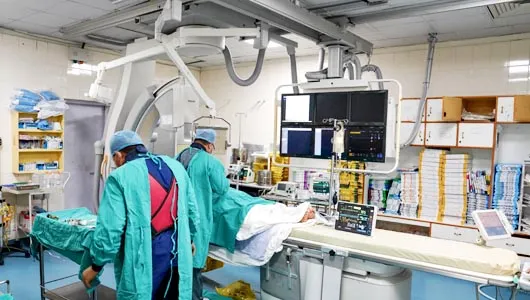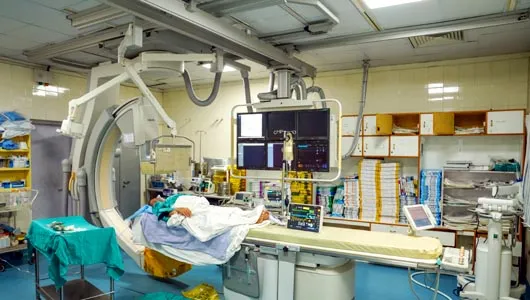
Radiation Oncology
Radiation oncology is a medical specialty that involves treating cancer with ionising radiation. It is an important part of multimodality management of cancer and at least 70-80% of all cancer patients require radiation sometime during the course of their treatment. Radiation oncologists treat malignant diseases and work closely with medical oncologists, surgeons and other doctors to coordinate the best care. Different types of cancers including Breast, Rectal, Lung and many more are treated under Radiation Oncology.
Radiation therapy or radiotherapy uses different types of radiation like X-rays and high energy beams to target cancer cells and kill them. Radiotherapy for cancer may be used as a stand alone treatment or may be used along with other treatment options like chemotherapy and surgery.
Our Team
Himalayan Hospital offers various types of radiation therapy, including :
- External beam radiation therapy : This involves the use of a machine that directs high-energy radiation beams at the cancer cells from outside the body.
- Brachytherapy : This involves the placement of radioactive sources directly into or near the tumour, either temporarily or permanently.
- Stereotactic body radiation therapy (SBRT) : This involves delivering high doses of radiation to small, well-defined tumours in the body using precise imaging techniques.
- Intensity-modulated radiation therapy (IMRT) : This involves the use of computer-controlled radiation beams that are shaped to match the size and shape of the tumour, allowing for more targeted and precise radiation delivery.


-
Conventional Radiation Therapy
The facility of conventional radiation therapy is available at Himalayan Hospital, which allows the delivery of treatment over multiple sessions.
-
IGRT
IGRT is a form of radiotherapy technique, which makes use of various imaging techniques during each treatment session in order to ensure that the radiation is precisely delivered to the tumor. One of the main advantages of IGRT is that it reduces damage to nearby healthy tissues.
-
IMRT
Himalayan Hospital also offers intensity-modulated radiation therapy. It conforms to the tumor shape by manipulating proton beams and photons.
-
3DCRT
The facility of 3D- conformal radiation therapy is also available at Himalayan Hospital, which ensures precise radiation dose calculation, computer-controlled treatment delivery, and computer-optimized treatment planning.
-
Adaptive Radiation Therapy
The facility of adaptive radiation therapy allows the oncologists to change the treatment plan according to the change in the functioning of the tumor (such as hypoxia) or alteration in anatomy (weight loss or tumor shrinkage).
-
Brachytherapy
It is also called internal radiation therapy. During brachytherapy, the doctor places a radiation source (in the form of beads, needs, or pellets) inside or close to the tumor; this radiation source starts emitting radiation, which kills the cancer cells.
-
Intraoperative Radiation Therapy
Himalayan Hospital also offers intraoperative radiation therapy services. It is used while operating on cancers that are difficult to be treated through surgery alone.
-
Total Body Radiation Therapy
Total body radiation therapy is delivered to suppress the immune system in patients who are looking forward to undergoing stem cell transplantation.
| Head and neck cancers | Breast cancer | Cervical Cancers |
| Brain tumour | Spinal cord tumours | Prostate cancer |
| Lung cancer | Lymphoma | Liver cancer |
| Paranasal sinus cancer | Bone cancer | Pancreatic cancer |
| Sarcomas | Leukaemia | Rectal cancers |
Radiation oncologists are also involved in the treatment of conditions other than cancer, including :
| Arteriovenous malformations | Acoustic neuroma |
| Trigeminal neuralgia | Hypertrophied scars |
| Some benign bone conditions |




